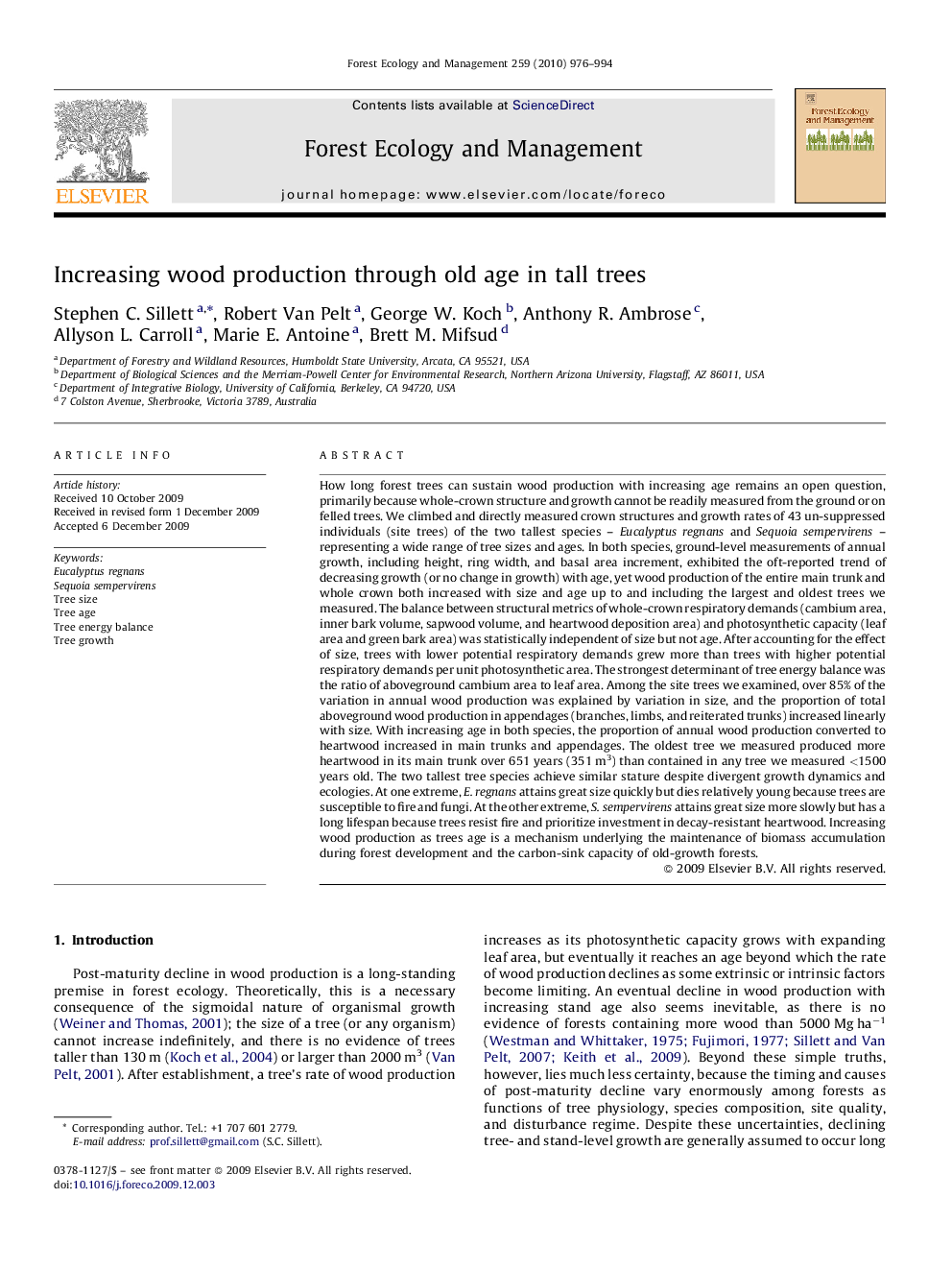| کد مقاله | کد نشریه | سال انتشار | مقاله انگلیسی | نسخه تمام متن |
|---|---|---|---|---|
| 88226 | 159291 | 2010 | 19 صفحه PDF | دانلود رایگان |

How long forest trees can sustain wood production with increasing age remains an open question, primarily because whole-crown structure and growth cannot be readily measured from the ground or on felled trees. We climbed and directly measured crown structures and growth rates of 43 un-suppressed individuals (site trees) of the two tallest species – Eucalyptus regnans and Sequoia sempervirens – representing a wide range of tree sizes and ages. In both species, ground-level measurements of annual growth, including height, ring width, and basal area increment, exhibited the oft-reported trend of decreasing growth (or no change in growth) with age, yet wood production of the entire main trunk and whole crown both increased with size and age up to and including the largest and oldest trees we measured. The balance between structural metrics of whole-crown respiratory demands (cambium area, inner bark volume, sapwood volume, and heartwood deposition area) and photosynthetic capacity (leaf area and green bark area) was statistically independent of size but not age. After accounting for the effect of size, trees with lower potential respiratory demands grew more than trees with higher potential respiratory demands per unit photosynthetic area. The strongest determinant of tree energy balance was the ratio of aboveground cambium area to leaf area. Among the site trees we examined, over 85% of the variation in annual wood production was explained by variation in size, and the proportion of total aboveground wood production in appendages (branches, limbs, and reiterated trunks) increased linearly with size. With increasing age in both species, the proportion of annual wood production converted to heartwood increased in main trunks and appendages. The oldest tree we measured produced more heartwood in its main trunk over 651 years (351 m3) than contained in any tree we measured <1500 years old. The two tallest tree species achieve similar stature despite divergent growth dynamics and ecologies. At one extreme, E. regnans attains great size quickly but dies relatively young because trees are susceptible to fire and fungi. At the other extreme, S. sempervirens attains great size more slowly but has a long lifespan because trees resist fire and prioritize investment in decay-resistant heartwood. Increasing wood production as trees age is a mechanism underlying the maintenance of biomass accumulation during forest development and the carbon-sink capacity of old-growth forests.
Journal: Forest Ecology and Management - Volume 259, Issue 5, 20 February 2010, Pages 976–994